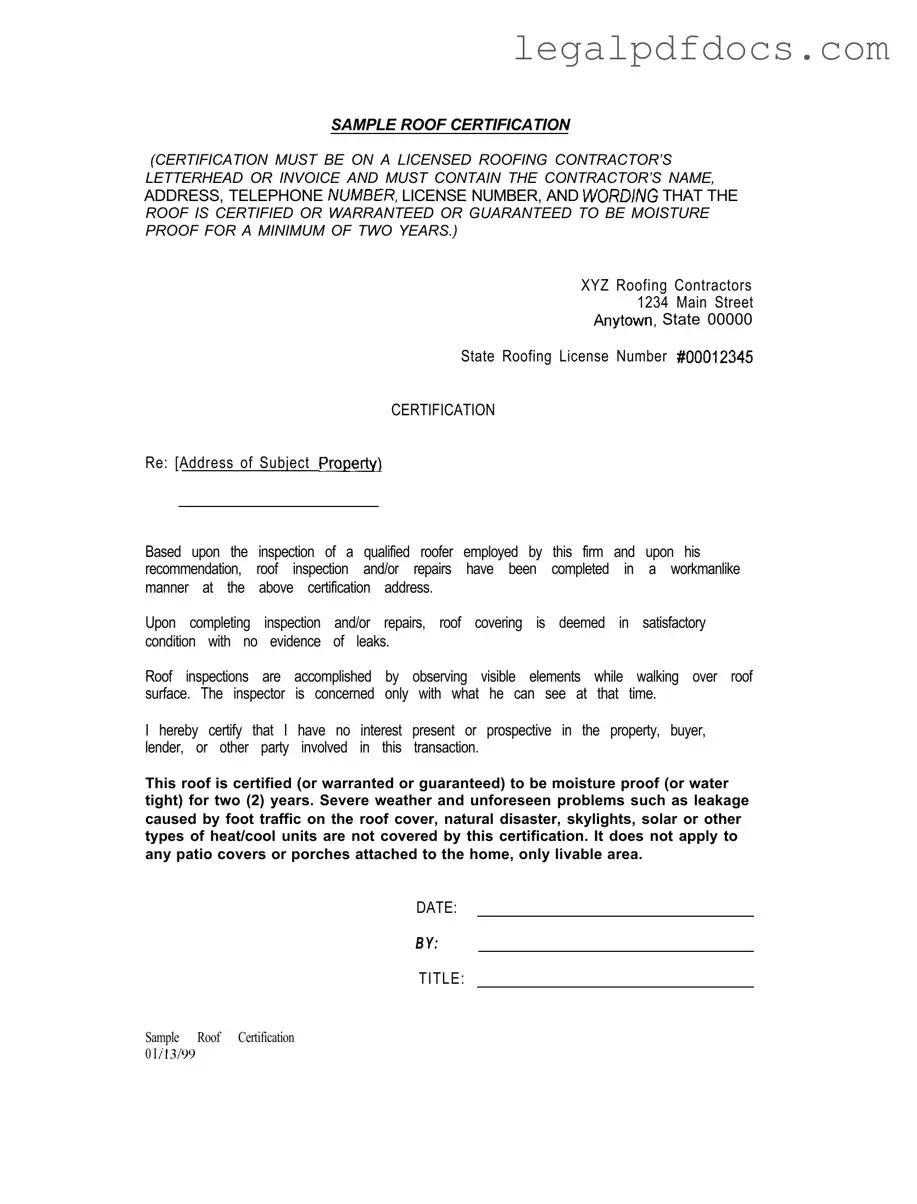The Sample Roof Certification form serves as a crucial document for homeowners and contractors alike, providing essential assurances about the integrity of a roof following inspection or repair. This form must be issued on the official letterhead or invoice of a licensed roofing contractor, ensuring that it contains specific information such as the contractor’s name, address, telephone number, and license number. At its core, the certification states that the roof has been inspected and deemed moisture-proof for a minimum of two years, a vital assurance for potential buyers and lenders. The form outlines the scope of the inspection, which is based solely on visible elements observed during the assessment. It also clarifies that the inspector holds no personal interest in the property or transaction, thereby maintaining objectivity. Importantly, the certification excludes coverage for damage resulting from severe weather, foot traffic, or natural disasters, as well as limitations regarding attached structures like patio covers. This document, therefore, not only establishes a timeline for warranty but also delineates the boundaries of coverage, making it an indispensable tool in real estate transactions.
